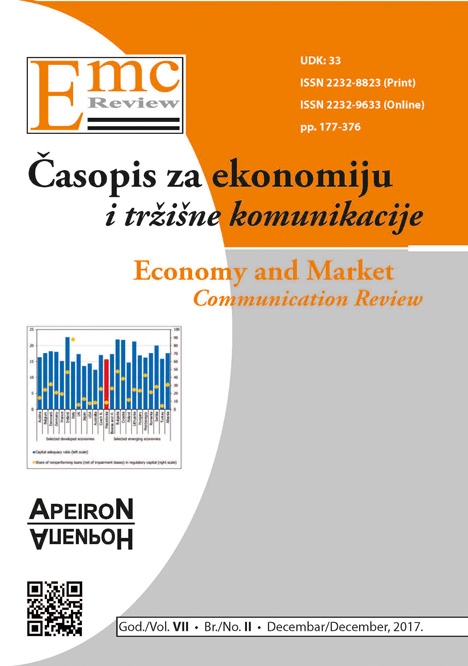THE RELATIONSHIP AMONG THE INFLOW OF FOREIGN DIRECT INVESTMENTS, EXPORTS AND ECONOMIC GROWTH IN THE EU COUNTRIES // POVEZANOST PRILJEVA INOZEMNIH IZRAVNIH ULAGANJA, IZVOZA I EKONOMSKOG RASTA U ZEMLJAMA EUROPSKE UNIJE
DOI:
https://doi.org/10.7251/EMC1702252VAbstract
The ever-increasing processes of globalization and regionalization are reflected in the greater volume of international trade and investments. As a result of the aforementioned, the shares of export and import of goods in the national product are increased considerably, while international investment and loans grow faster than the world’s trade. Stronger market liberalization on both regional and global levels, has contributed to the integration of the world market. The previously mentioned processes of globalization, regionalization, and liberalization of economic relationships are, in addition, reflected in the ever-increasing capital mobility. Most countries have recognized the importance of investments and export as means of achieving economic prosperity and have included subsidy programs into their national strategies. Investigation of the relationship between export and economic growth has an important place in the literature. A hypothesis on export-oriented growth, which assumes that export-driven policies contribute to economic growth, is now widely accepted. On the other hand, Foreign Direct Investments (FDI) have been recognized as one of the most stable forms of foreign capital inflow. Their role is even greater if we consider possible positive effects on the increase of competitiveness and economic growth of the recipient country. FDI inflows can have a positive impact on the development and accumulation of human capital, employment growth, and can be a source of technology overflow. However, it should be emphasized that the impact of foreign direct investments on economic growth and development depends on the country’s own level of development, economic and social conditions, the degree of technological development, country’s openness to trade and the level of complementarity or substitutability of FDI, as well as the domestic investments. The objective of this paper is to examine the correlation between export, the inflow of foreign direct investment and economic growth, measured by gross domestic product per capita, on a sample of the EU member countries (EU28). The member countries will be divided into two groups (EU15 and EU13) due to their heterogeneity, which hinders the establishment of uniform conclusions for all the member countries of integration. The conclusions of the research on the relationship between the observed variables can be useful in the process of making effective development policies and strategies.Downloads
Published
2017-12-21
Issue
Section
Чланци
